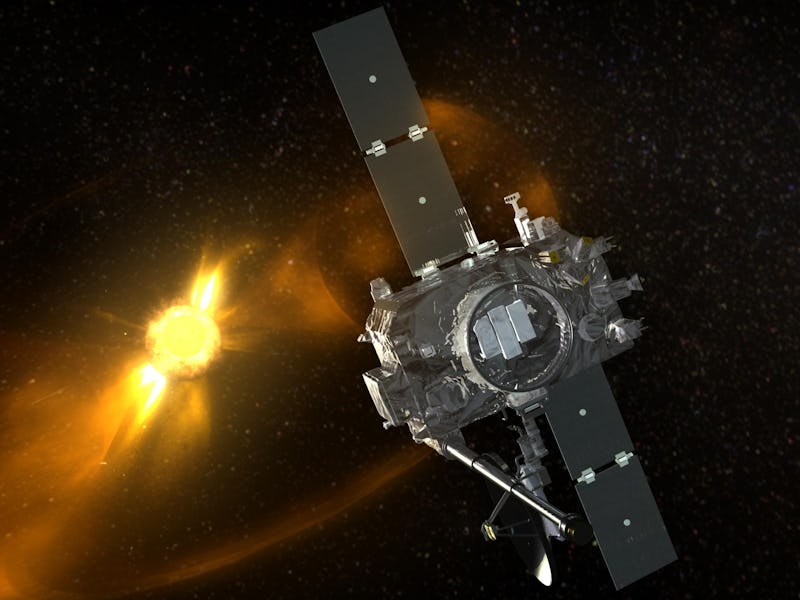After nearly two years of trying, NASA finally reestablished contact with its STEREO-B spacecraft today.
STEREO-B is part of a two-ship team of spacecraft that comprise the Solar Terrestrial Relations Observatory (STEREO). It launched in October 2006 toward the sun to study the origins of coronal mass ejections — big expulsions of plasma and magnetic energy and other solar phenomena — but the agency lost track of its robotic explorer on October 1st, 2014. NASA has spent the past two years spamming STEREO-B with pings, but until today, hadn’t heard anything back.
Both STEREO-A and STEREO-B were inserted into orbits around the sun that would cause them to gradually pull ahead and behind Earth, respectively, and enable stereoscopic imaging of the sun and its behavior. This is critical for not just understanding more about how the sun works, but also in anticipating and preparing technology on Earth that could be threatened by solar attacks.
The positions of both spacecraft, as of August 2016.
Although STEREO-A has been running smoothly, contact with STEREO-B was lost for 22 months after a hard-reset operation malfunctioned, and NASA has worked tirelessly to recover the eyes and years of its solar probe. The most recent effort involved a monthly attempt to establish a working signal using NASA’s Deep Space Network, which the agency uses to track and talk to its satellites throughout the solar system.
With radio contact reestablished with STEREO-B, the mission will likely move forward as planned.
